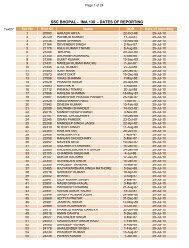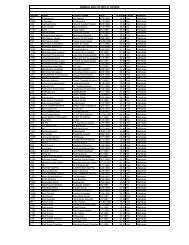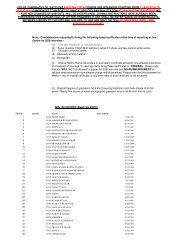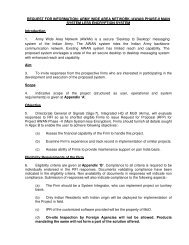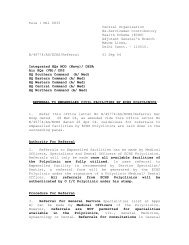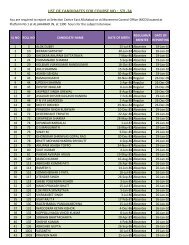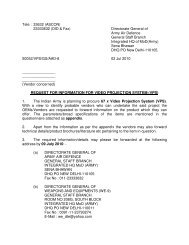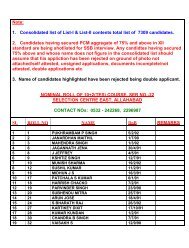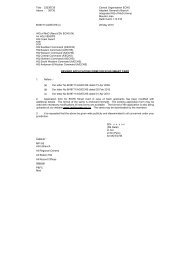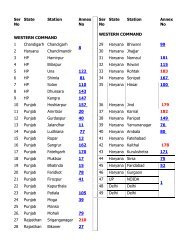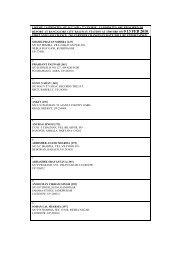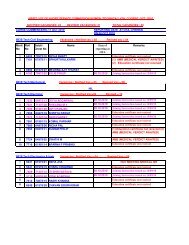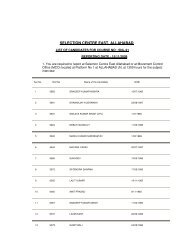ARMY WIDE AREA NETWORK (AWAN) - Indian Army
ARMY WIDE AREA NETWORK (AWAN) - Indian Army
ARMY WIDE AREA NETWORK (AWAN) - Indian Army
You also want an ePaper? Increase the reach of your titles
YUMPU automatically turns print PDFs into web optimized ePapers that Google loves.
USER REQUIREMENTS<br />
Appendix ‘A’<br />
(Refers to Para 4 of RFI for<br />
<strong>AWAN</strong>-II)<br />
1. Project <strong>Army</strong> Wide Area Network (<strong>AWAN</strong>) Phase II is proposed for implementation of a<br />
desktop to desktop secure workflow and messaging solution for users of the <strong>Indian</strong> <strong>Army</strong>. It<br />
requires a single system which should provide basic services like formal and informal<br />
messaging, portal, FTP etc. The solution will also have its own directory services, security<br />
architecture based on asymmetric key algorithm, certification and registration services. This<br />
system will be implemented on IP/MPLS based framework. The proposed solution should be<br />
platform/OS independent. The technology used for the solution should be open standards with<br />
minimum operational complexity.<br />
2. The network architecture for the Project <strong>AWAN</strong>-II will be hierarchical to cater for the<br />
need of assured application delivery, scalability and high availability. The existing media of the<br />
<strong>Indian</strong> <strong>Army</strong> will be made use of for this project. It will have self organizing network architecture<br />
which will provide high resilience and fast convergence with minimal network failover time.<br />
Management traffic should be restricted to minimum during change in network topology, to<br />
avoid unnecessary flooding of the network and bandwidth wastage. A disaster recovery should<br />
be built into the system at various levels to ensure continuous availability of services and will<br />
be transparent to the users. All the network devices should be manageable through a central<br />
NMS. The system should also be able to work with Combat Net Radio and in poor media<br />
conditions i.e. as low as 600 bps.<br />
3. The implementation of the proposed solution is envisaged as given below:-<br />
(a) Hardware. The system will be implemented in a hierarchical architecture. It will<br />
be based on the concept of communication node called Message Processing Server<br />
(MPS). These MPSs will be installed at approximately (300-500) locations on Pan India<br />
basis and this number may further increase as and when MPSs from various static<br />
locations are split, uprooted and deployed in an operational area. Most of these MPSs<br />
will be static. However, certain MPSs are required to be mounted on vehicles, to be<br />
provided by user. These transportable nodes will cater for those users who move out<br />
temporarily for short duration. Each communication node will comprise of major<br />
equipments like routers, switches, servers, firewall, IPS etc. The configuration and<br />
scale of equipments at each node may vary depending upon the user requirement.<br />
<strong>AWAN</strong>-II will also have support for integration with other IP/MPLS or ATM based<br />
network. The system will also be integrated with the inline encryption device provided by<br />
the user to be used between clients and servers.<br />
(b) Software. Besides the standard operating system/firmware required for the<br />
servers/network equipments following application software will form part of the project:-



